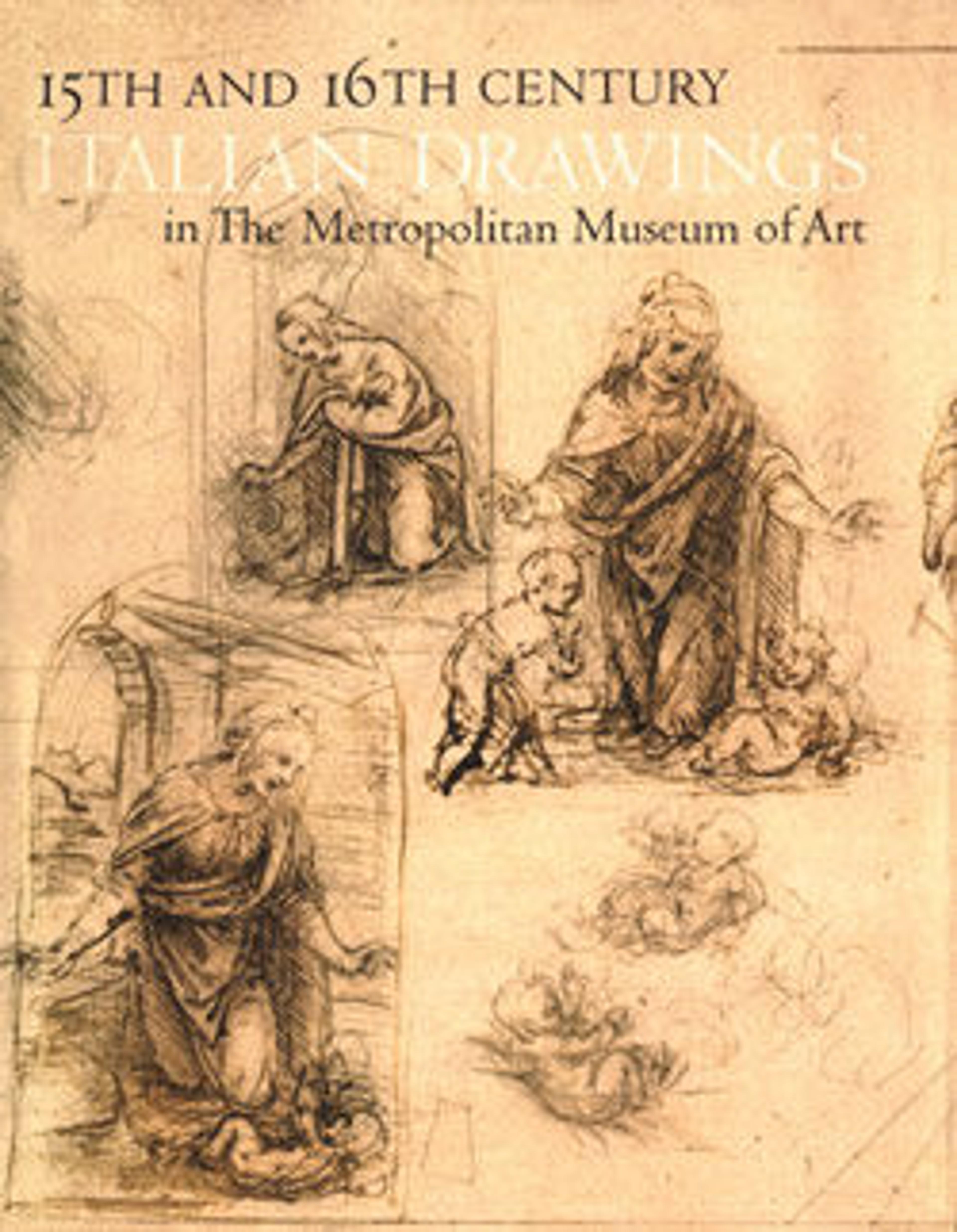The Martyrdom of Saint Clement I, Pope
This sheet constitutes a study, with several variations, for a fresco painted by Agostino Ciampelli in 1596-1597 on one of the end walls of the Canon's Sacristy in San Giovanni in Laterano, Rome, on the commission of Pope Clement VIII Aldobrandini (r. 1592-1605). The lunette-shaped fresco is pierced by a central door, and the reserves at lower left and right in the drawing indicate places for cupboards. The apocryphal acts of Pope Clement I (died ca. A.D. 99) recount that he was banished by Trajan to Crimea where he had to work in the quarries.
As the nearest drinking water was six miles away, Clement miraculously found a nearer spring for the use of the numerous Christian captives (the subject of Ciampelli's fresco on the opposite end wall of the sacristy). Clement preached among the people with great success and was therefore thrown into the sea with an anchor tied round his neck. Angels built him a tomb beneath the waves which once a year was revealed by a miraculous ebbing of the tide. These last two events are recorded in our drawing and the related fresco. This composition study seems to be the only surviving preparatory drawing by Ciampelli for his work in the Lateran sacristy. Although not related to the same commission, a highly detailed ‘modello’ in the Uffizi (inv. 1056 F) closely relates in style with the Museum’s ‘Martyrdom’.
As the nearest drinking water was six miles away, Clement miraculously found a nearer spring for the use of the numerous Christian captives (the subject of Ciampelli's fresco on the opposite end wall of the sacristy). Clement preached among the people with great success and was therefore thrown into the sea with an anchor tied round his neck. Angels built him a tomb beneath the waves which once a year was revealed by a miraculous ebbing of the tide. These last two events are recorded in our drawing and the related fresco. This composition study seems to be the only surviving preparatory drawing by Ciampelli for his work in the Lateran sacristy. Although not related to the same commission, a highly detailed ‘modello’ in the Uffizi (inv. 1056 F) closely relates in style with the Museum’s ‘Martyrdom’.
Artwork Details
- Title: The Martyrdom of Saint Clement I, Pope
- Artist: Agostino Ciampelli (Italian, Florence 1565–1630 Rome)
- Date: 1596–97
- Medium: Pen and brown ink, brush and brown wash, highlighted with white, over black chalk, on brownish paper
- Dimensions: 11-1/4 x 17-7/16 in. (28.6 x 44.3 cm)
- Classification: Drawings
- Credit Line: Harry G. Sperling Fund, 1979
- Object Number: 1979.286.2
- Curatorial Department: Drawings and Prints
More Artwork
Research Resources
The Met provides unparalleled resources for research and welcomes an international community of students and scholars. The Met's Open Access API is where creators and researchers can connect to the The Met collection. Open Access data and public domain images are available for unrestricted commercial and noncommercial use without permission or fee.
To request images under copyright and other restrictions, please use this Image Request form.
Feedback
We continue to research and examine historical and cultural context for objects in The Met collection. If you have comments or questions about this object record, please contact us using the form below. The Museum looks forward to receiving your comments.
